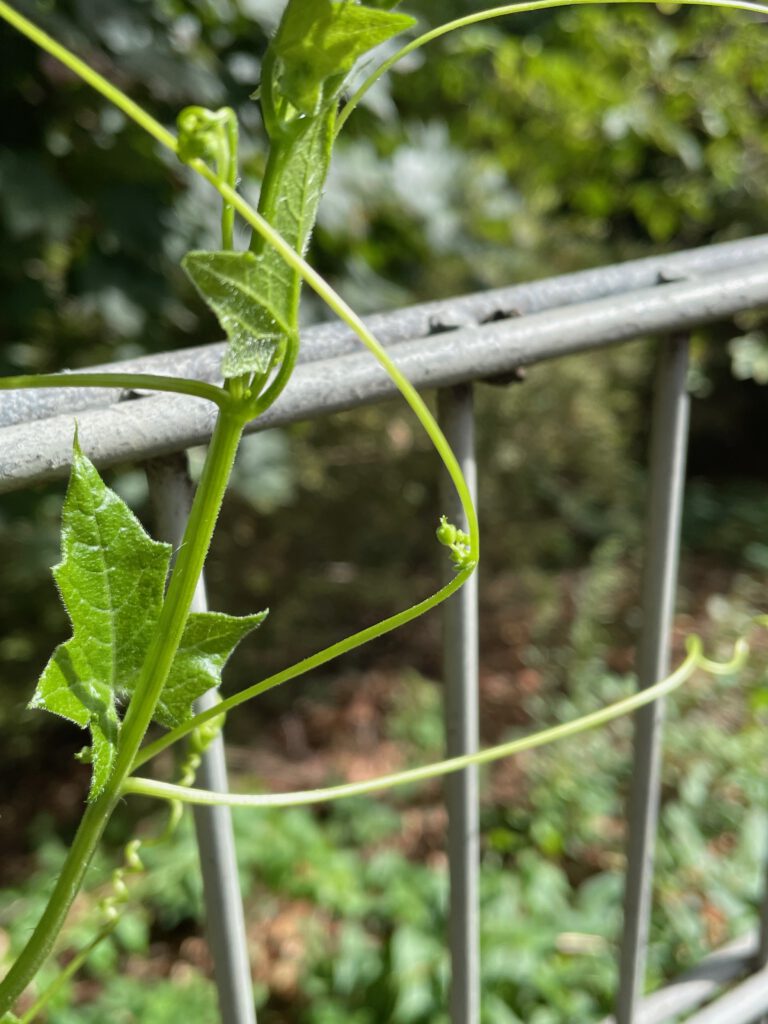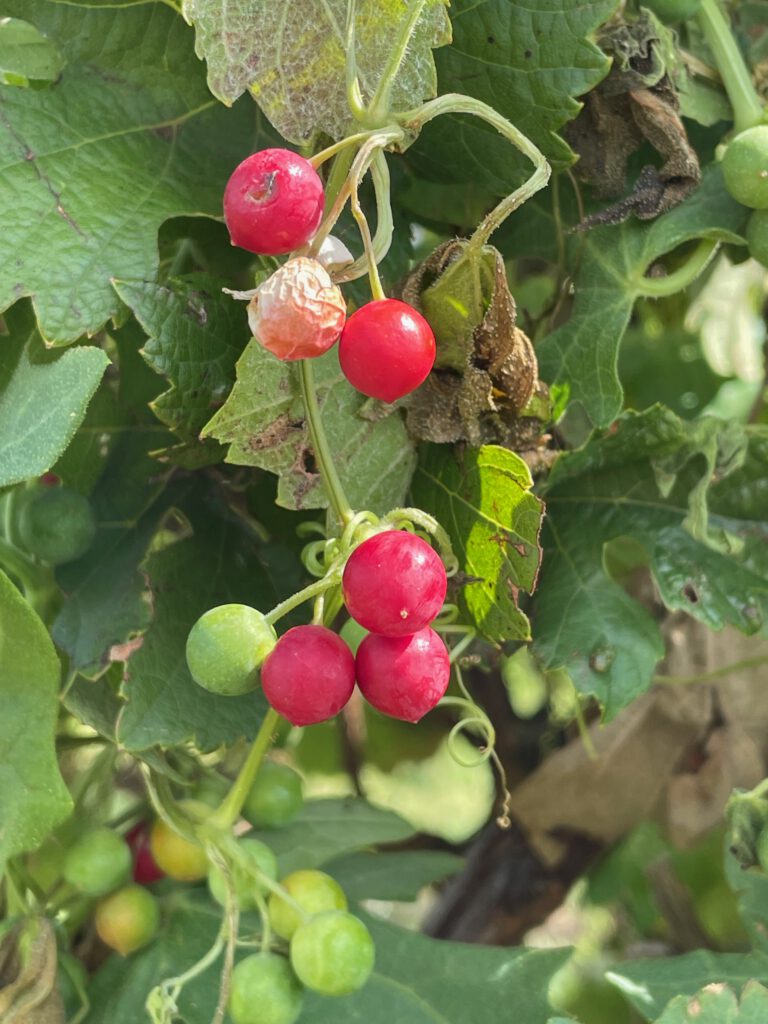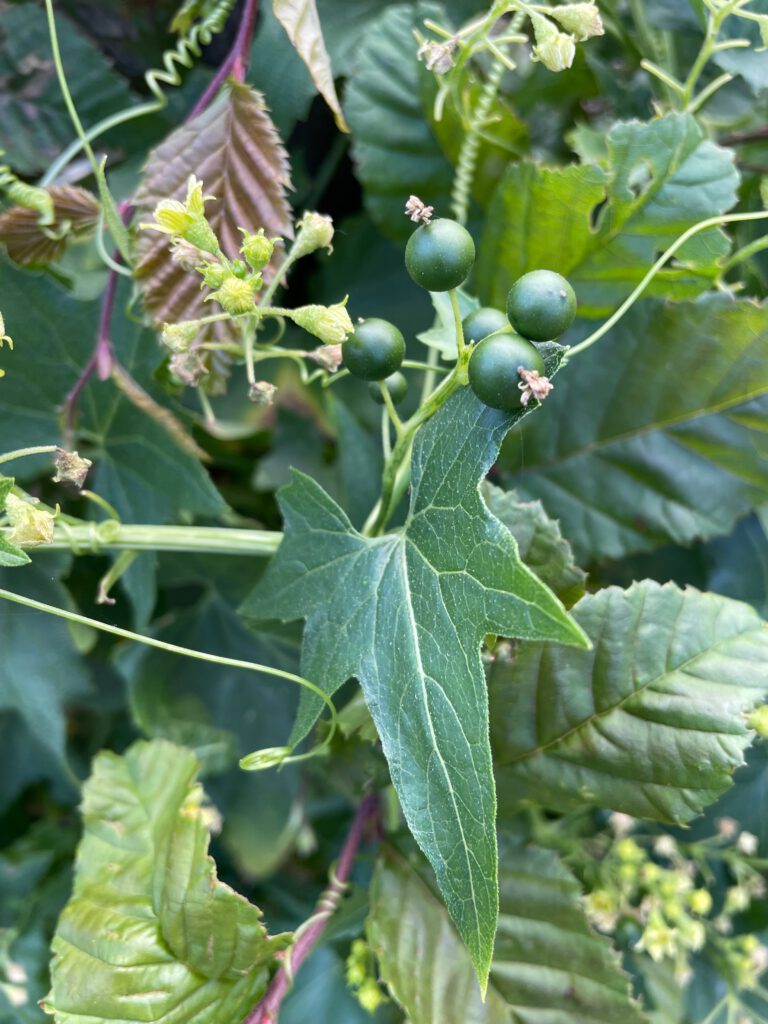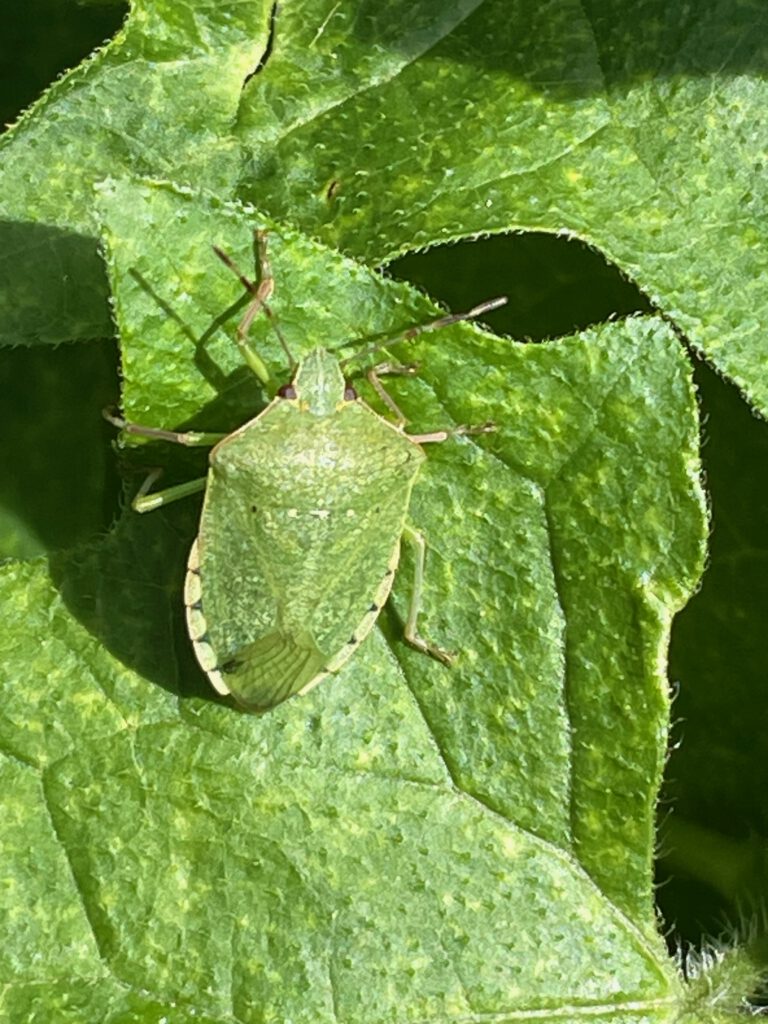Red or red-fruited bryony
The red bryony climbs the fence of a school. According to the literature, about 10-15 of its berries can be fatal to children. But nobody really knows for sure, and the students and their parents seem unconcerned.
Colored by the plant compound lycopene, the berries glow like ripe tomatoes. Fortunately, however, it's rare for children to eat the pungent fruit. They might be tempted to try it, but then they'll spit it out.
Traditional medicinal plant
Bryony is a medicinal plant used in folk medicine. The drug is not extracted from the lycopene-colored berries, but from the robust, turnip-like root, which sits deep in the soil. Pharmacists call it Bryoniae Radix and attribute its medicinal properties to the bitter-tasting glycosides it contains, especially bryonin.
If the threshold for poisoning is exceeded, patients are plagued by vomiting, diarrhea, cramps, and sometimes even worse. Today, Bryoniae Radix is rarely used to treat ulcers and tumors as it once was.
Only names like Ophiostaphylos in Dioscorides or Gout Beet in folk medicine still remind us of how widely the bryony was once used. Ophiosstaphylos means something like snake wine, and the bryony was probably one of the many plants around the Mediterranean that were said to help with snakebites.
Bryony also borrowed some medicinal uses from the similar-looking root of the mandrake. This was done in the belief that the plant's appearance supposedly revealed signatures that indicated its intended use.
The berries were apparently also used to dehair animal hides, and very young shoots were harvested as vegetables in early spring. At this stage, they are apparently still non-toxic. (See "Culinary in Spring" on this website https://botany-bay.de/portfolio/kulinarisches-fruehlingserwachen/).
The monoecious sister species White Bryony (Bryonia alba)
The red bryony, which is widespread in southwest Germany, has a monoecious counterpart in the eastern white bryony (Bryonia alba).
What the scientific name reveals about the bryony
Even after the end of its medical career, the bryony remains fascinating. Its scientific name has changed from Bryonia dioica to Bryonia cretica ssp. dioica. In fact, the species was described by Linnaeus in 1753 as a plant from Crete. The Viennese botanist Jacquin named the Central European plants Bryonia dioica in 1775. With the species epithet "dioica," he referred to the important characteristic of dioecy, which Linnaeus had apparently overlooked. The Swede even explicitly grouped the species with the monoecious plants (class Monoecia). Since it is now believed that Linnaeus and Jacquin ultimately described the same species, the older name of Linnaeus is used – despite the confusing reference to Crete.
About 7% of flowering plants are dioecious. In the case of bryony, it's easy to overlook the fact that male and female flowers are located on separate plants. Usually, both sexes are so closely entwined that it's not noticeable that only the female ones produce fruit.
Growth spurts and climbing skills
Every year, the shoots of the bryony shoot up from the ground with impressive speed. The overwintering root, which is about the size of a sugar beet, provides the nutrients for this growth spurt
The ancient name Bryonia means "wildly growing vine." With their tendrils, the up to 4-5 meter long shoots firmly anchor themselves to their climbing supports.
They are aided in this by a special feature that other climbing plants lack. The tendrils connect to their support at their tips by twisting in a spiral-like manner. At the same time, the base of the tendril also rotates in the opposite direction. Where the tendril sections, which twist to the left and right, meet, there is a 0.5 to 1 cm long straight section. This elastic, springy construction gives the tendrils exceptional stability.
Insects defy the poisons of the bryony
While the sap of the bryony plant may be problematic for humans, it is welcome to some insects. The bryony ladybird (Henosepilachna argus) feeds on it.
The rice bug (Nezara viridula), which migrated from the tropics, thrives on bryony as well as other cucurbits. It apparently reproduces on them as well, as its nymphs can be found in large numbers on bryony in some places.





